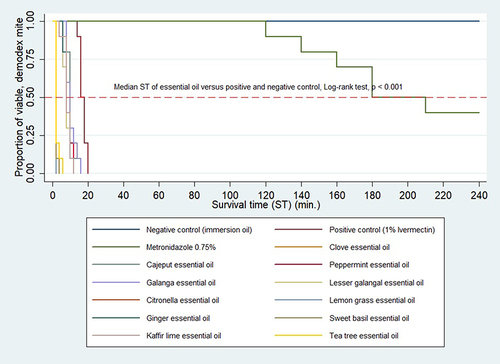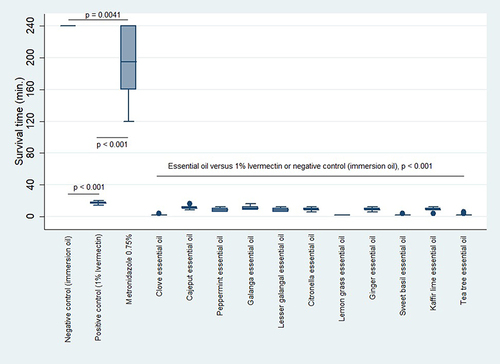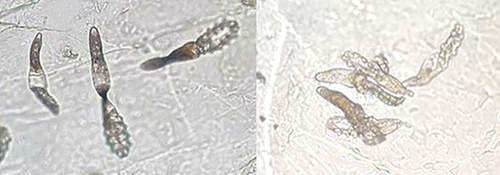Figures & data
Table 1 The Survival Time of D. folliculorum from Standardized Skin Surface Biopsy Slides in Different Test Agents
Table 2 To Compare the Median Survival Time Differences Between Thai Herbal Essential Oils and Tea Tree Oil, Metronidazole 0.75%, Positive Control (ivermectin 1%), and Negative Control (Immersion Oil), Using the Log Rank Test
Figure 1 Kaplan-Meier survival curve to demonstrate the survival time between the test agents.

Data Sharing Statement
Unavailable data, but the reader can personally request access via Dr Anon Paichitrojjana; E-mail: [email protected].



